Oxford Children’s Maths and Science Words
£8.50£10.40 (-18%)
Oxford Children’s Maths and Science Words is the perfect introduction to science and maths words for young children starting school. With over 600 first maths and science words explained clearly with colourful illustrations and simple definitions, this book makes learning new words easy and fun. Words and definitions are matched to the curriculum to help prepare young children for learning maths and science at school.
This book also includes technology and environment words to help children navigate the world around them, as well as the growing virtual one. The 2-column alphabetical dictionary format makes words easy to find and introduces young children to using a dictionary.
Free downloadable learning resources, activities, puzzles, and much more are available for additional online support at www.oxfordschooldictionaries.com.
Read more
Additional information
| Publisher | 1st edition (1 July 2021), Oxford University Press |
|---|---|
| Language | English |
| Paperback | 120 pages |
| ISBN-10 | 0192777920 |
| ISBN-13 | 978-0192777928 |
| Dimensions | 18.6 x 1 x 24.1 cm |


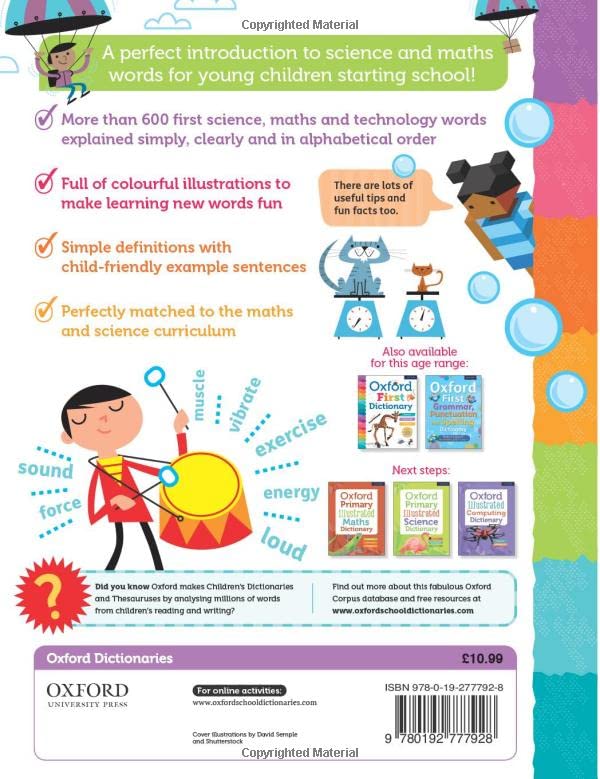
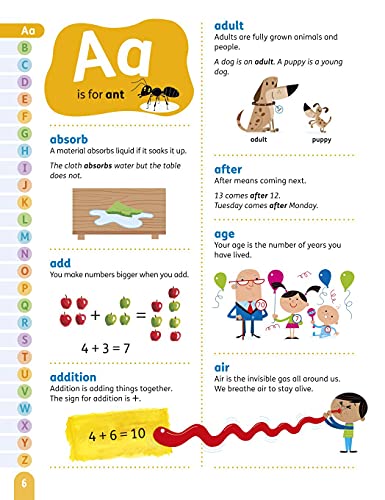
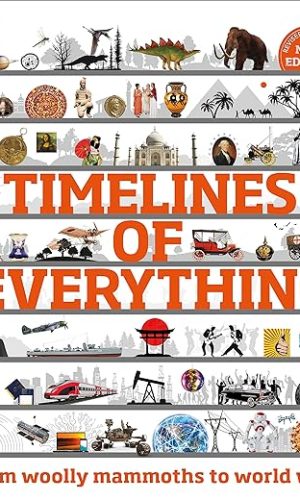
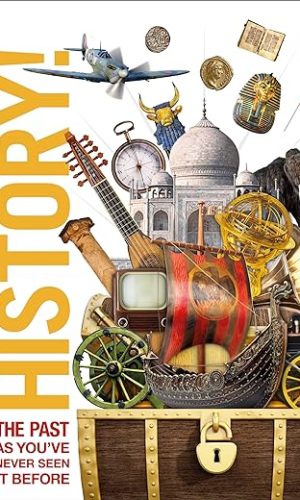
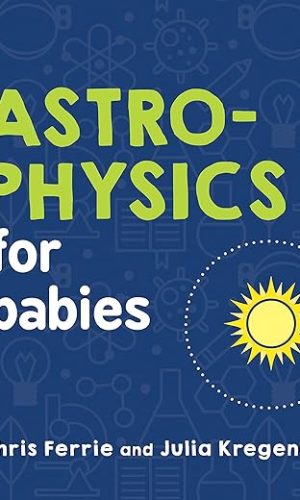
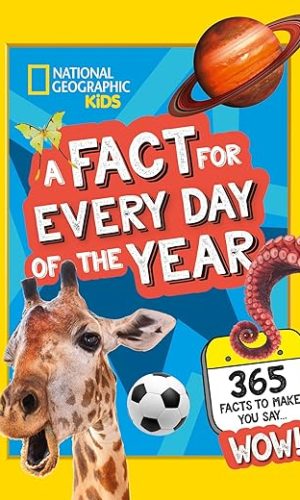
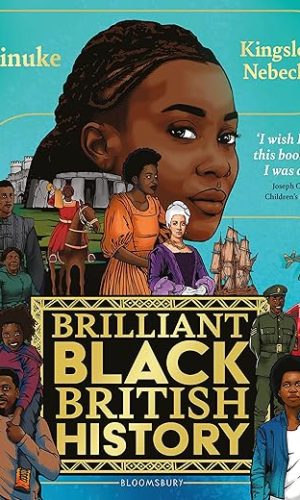
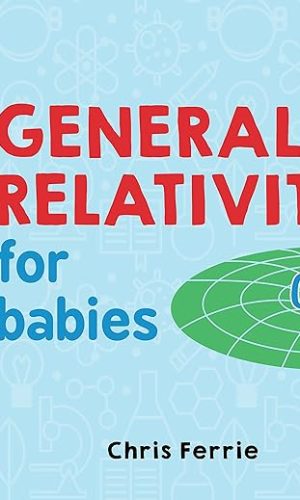

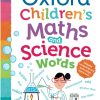
by A
The media could not be loaded.
This book is just perfect. Full with pictures, and lots of useful things. Times tables, shapes, days of the week, months of the year, numbers, and lots and lots more. This book has 120 pages. Perfect for young children. I would highly recommend it.
Thank you for reading my review. I hope you have found it helpful.
by We think that…
This is the kind of thing that is useful to have around as it is extremely concise and simple exclamations of common maths and science words that your child will be learning in school. It’s not so much a book that you could read front to back however it is good to keep to hand as if you were doing maths or science work, it will give you a better answer than the likes of Google as it is just what is required and it is kept really simple.
by gogo cat
The Oxford Math’s and Science Words I feel is maybe a bit off-putting as it’s not as technical as you may think. It’s a great first dictionary covering a wide range of words which you may not necessarily think are science or maths based such as emoji, finger, fire and sort. I like it’s layout – you’ve got the alphabet down the side which highlights which letter that section is focused on followed by each word heading, a short description and a cartoon picture to illustrate it. The text is simple and concise e.g. “Glass is a hard, shiny, transparent material. Glass can be many different colours.” with a tip to look up the word transparent on page 96. At the back there is a section on maths, science and computing doing words, apparatus and equipment, days of the week, months, time words, numbers, times tables (up to 12) and shapes. My son is 4 and has really enjoyed just looking through the pages and I can point to a picture and ask him what it is or give him the definition which helps his vocabulary. It’s something he can grow with as he then starts school and learns his times tables. It’s really bright and colourful and very easy to understand to help give a very basic knowledge.
by C2L
A dictionary of scientific and mathematical terms for young children. Each word is explained briefly and doesn’t go into much detail, but it is clear and concise and would work well to compliment other books/ lessons.
Some examples:
Offline: Offline means not connected to the internet.
Offspring: Offspring are the young of an animal. A horse’s offspring is called a foal.
Clear, simple illustrations and diagrams help explain each word.
At the end of the book a list of doing words related to science is included, as well as equipment names, shapes and numbers, all invaluable information in helping to develop children’s’ scientific knowledge.
by CobWeb
To avoid potential duplication, this publication is:
???? ‘…adapted from:
‘Oxford First Illustrated Maths Dictionary/2001’ (978-0192733528)
&
‘Oxford First Illustrated Science Dictionary/2003’ (978-0192733542)’
They were not my favourites at the time, as they have an odd mix for the intended age group, IMO, and posed more questions than they answered, for the best part.
The current stock images above give an idea of the content to see if it is the style for you & yours.
ooOoo
Back to the book in hand.
On the surface it is an attractive looking paperback, from Oxford University Press, with 120 colourful, shiny finish, numbered pages.
The front cover choice of ‘vocabulary’ suggests it is aimed at the older, but inside the relevant letter is initially, e.g.
~ Aa is for ant
~ Bb is for bat
~ Cc is for crocodile
~ Dd is for dog…
The INTRODUCTION, on pages 4 & 5, advises how to use this dictionary, then it is straight into the definitions, the chosen words set out in an easy-on-the-eye 2-column format on each page, with relevant pictures.
As mentioned before, and still IMO, the words defined are a peculiar mix with some quite short, definition/s, at times, e.g. from the letter M (‘Mm is for mole):
????~ ‘machine: Machines help us do work.’
????~ ‘male: A male animal does not give birth or lay eggs.
A cockerel is a male chicken.’
????~ ‘mammal: Mammals are furry or hairy animals.
Mammal mothers feed their young on their milk.’
????~ ‘medicine: Drugs that make you better are called medicines.’
????~ ‘message: A message or a text message is a short written message you can send from your phone to someone else’s phone.
A text message is sometimes called a text.’
????~ ‘milk: Young mammals drink milk from their mother’s body’
????~ ‘mushroom: A mushroom is a type of fungus that grows in the earth and looks like a little umbrella.’
(Toadstool is not in the book!)
Some are, arguably, more complex, e.g.:
????~ ‘drug: A drug is a chemical that affects your body. Aspirin is a drug that is used to stop pain. Alcohol is a drug in wine and beer.’
????~ ‘DVD: DVD stands for digital video disk or digital versatile disk.
It is a way to store digital data.’
????~ ‘phishing: Phishing is a way to trick people on the internet by sending them an email that looks real but isn’t. It sounds like the word fishing’.’
Some definitions may prove controversial, e.g.:
????~ ‘colour: There are millions of colours. We can see colours but some animals only see in black and white.’
????~ ‘weed: Weeds are plants that we don’t want.
Nettles and dandelions are common weeds.’
Extra information is given in a coloured background, via ‘an avatar’, e.g.:
????~ ‘mask: A mask is a cover that you can wear over your face. People wear masks to protect their faces or to change the way they look.
People sometimes wear masks to stop spreading germs through sneezing, coughing and breathing.’
Towards the back the lists of ‘doing words’ & apparatus mentioned are not included in the dictionary definitions for the best part, e.g. ‘abacus’, and another reference book is likely to be required.
Winding up the book:
~ Days of the week, Months of the year & Time words
~ Numbers
~ Times tables 2 ~ 12
~ 2D & 3D shapes
❓‘Did you know that an octopus has three hearts?’…(You do now!)…ref ‘heart’/page 46.
by gogo cat
this is a science and maths words book for young children, it’s published by oxford dictionaries, i have so much confidence to the content and their way of helping children to learn
this is a 120 pages book, size and weight are good for young children to hold and read, major part of the book contains a little dictionary of science and maths word from a to z, actually it’s a collection of modern and frequently used words, very useful for kids to learn (data, email, emoji, smartphone, etc)
there is short description (and little picture) to explain each of the word, helpful for parents to explain the word further in detail
there are 10 little sections (pages) at the end of the book, with collection of essential learning material (times tables, date and time, math/science/computing doing words) which i think is good for kids to develop good foundation to learn wider range of knowledge
my little girl is very interested to read this book, not only read once, but also revisit some of the pages occasionally
content of this book should be good for kids from age 5, where they can read basic words and they could read some new word by blending phonics
i’m very satisfied with this book, would recommend